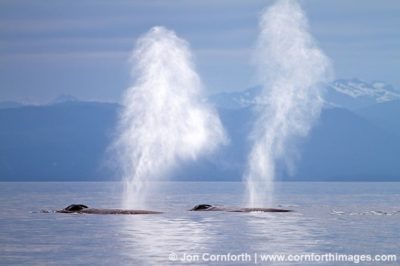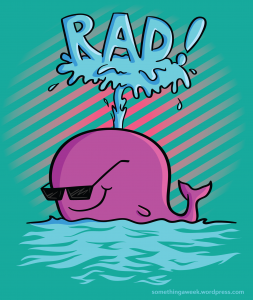
What is a blowhole?
A blowhole is essential the nostril of a whale. Similar to a human the whale’s blowhole is attached to their trachea and is connected to the lungs, however unlike humans the whale’s trachea and esophagus are separate, therefore a whale in there would never choke on food like a human might. The blowhole is also not located on the front of the whale but in fact on top of their head, funny to think about imagine if our noses were on top of our head instead of on our face? How would we wear sunglasses?

The purpose of having their blowhole on top of their head is for the convenience of not having to lift their entire head out of the water to get a breath. In fact a whale can’t even breathe through its mouth it can only breathe through its blowhole. Its mouth is just used for eating, nom nom nom. Just like if you were to hold your breath for a really long time you let out a huge breath of air and then you try taking in a big gulp of air, a whale essentially does the same thing. They take a massive breath and then hold it between 7-30 mins, or if you are a sperm whale you can hold your breath for up to 2 hours. After they hold their breath they let it out once they reach the surface letting out a huge burst of air. This is where we see the water spout that we call a “blow”
There are 2 distinct types of blow holes, 1 blow hole or 2 blowholes. The one blowhole looks kind of like a donut and the 2 blowhole looks kind of like a heart. Whales that have teeth are going to have a single hole, where as a whale that has baleen is going to have 2 holes.


Did you know the average human sneeze travels at about 100 mph? A whale will let out a single breath that can travel at speeds of 300 mph, 3 times the average speed of a sneeze!
When a whale let its breath it can travel at incredible speeds but it also reaches up 30 feet in the air, creating a cloud of mist or spray that almost every person on the ocean is looking for.

Now when these whales let out these mighty blows they aren’t releasing water from their blowhole they are letting out air, because their breath is so powerful it causes the water around its hole to create a cloud of mist. Well that mist isn’t just water it actually contains mucus and oils, it’s almost like the whale has a cold and is blowing its nose, gross…. Those whale blows can also be very stinky!

The coolest thing about a whale blow is that almost every species of whale has an iconic blow. Which means if you see a whale spout on the water you might be able to identify the whale species. If you see a giant heart shape come from the water chances their might be a right whale underneath it, if you see a geyser come up from the ocean it might be a sperm whale coming up from the deep depths of the ocean. The reason that they have iconic spouts is because the shape and design of their blowhole.
Now you know! So the next time you are out on the ocean or if you’re taking the boat over to Catalina Island and you see a big spout coming from the water, try and knowledge drop on your friends and tell them what type of whale you think it is!
Keep in mind: that whales and many other marine mammals are protected by the Marine Mammals Protection Act of 1972, so it’s very important that we respect the law as well as the safety of whales and all animals we see. A great way to make sure that you are being respectful to the animal and law is by staying a reasonable distance away and utilizing long lens for cameras.


